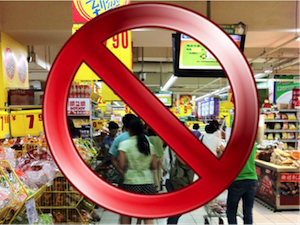 Strange things are happening in the world of retail. Little by little retailers appear to be waking up to the fact that price is not a great differentiator. The last two decades have seen an explosion in price promotions, couponing and money off deals. So much that now it seems that the only thing most retailers have to offer is a cheaper price. But as shoppers wise up to the fact that the real differences in price between one big box and another are not significant, some retailers are beginning to respond by coming up with better ways to differentiate – and are less dependent on using price as a retail strategy.
Strange things are happening in the world of retail. Little by little retailers appear to be waking up to the fact that price is not a great differentiator. The last two decades have seen an explosion in price promotions, couponing and money off deals. So much that now it seems that the only thing most retailers have to offer is a cheaper price. But as shoppers wise up to the fact that the real differences in price between one big box and another are not significant, some retailers are beginning to respond by coming up with better ways to differentiate – and are less dependent on using price as a retail strategy.
Why is price as a retail strategy weak?
It’s long been assumed that shoppers gravitate to the best price in the market. But this presumes shoppers know the price of an item. Most research suggests that they don’t or at least not within the boundaries of a plus or minus 10 percent margin. The truth behind the assumption is probably more likely to be that shoppers gravitate towards the best perceived price in the market. But even then price is rarely the main reason for choosing a store. Time and again, studies I read show that location and choice are the two many reasons why a store is chosen. And yet many retailers have continued to drive price as the main feature of their offer.
This has huge negative implications on consumer goods. Not least that lower pricing sucks value from the market place which benefits no-one. But further that it creates a vicious cycle of “lose, lose” between manufacturer and retailer. The ultimate conclusion of this will be dissatisfied customers. The more we train shoppers to seek out discounts, the more they will expect them and eventually the price point hits its floor. Left with no choice, manufacturers have to reduce product cost to continually meet price expectations and this ultimately leads to declines in product quality. All in, low price as a strategy is a zero-sum game.
If price isn’t it – what do shoppers really want?
Value – simple as that; shoppers want to feel that they have bought the right product for them and that they have paid a fair price for it. Value can’t be delivered by price alone – it’sa combination of quality experiences that ultimately leave you feeling that, when you hand your card to the cashier, you have made the right choices. This is what a growing number of retailers are learning.
Here are a number of examples of how retailers large and small are bringing these experiences to shoppers around the world.
Make good stuff, better
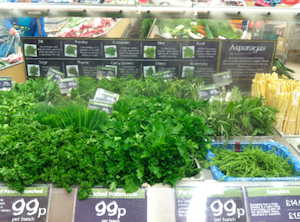 This is a herb display in UK retailer Morrison’s – my poor photography probably doesn’t clearly show that the fresh plants on display are being gently bathed in a steady fine mist of fresh water. Its keeps the stock looking good and super fresh but it also says, “You can’t get this product any fresher unless you grow it yourself”. Little tricks like this help shoppers feel that the trip to this store is worth making. Morrison’s have introduced a number of ideas like this throughout their stores, which makes shopping there so much more rewarding than a trip to Tesco and Asda – oh and by the way, the prices are good too!
This is a herb display in UK retailer Morrison’s – my poor photography probably doesn’t clearly show that the fresh plants on display are being gently bathed in a steady fine mist of fresh water. Its keeps the stock looking good and super fresh but it also says, “You can’t get this product any fresher unless you grow it yourself”. Little tricks like this help shoppers feel that the trip to this store is worth making. Morrison’s have introduced a number of ideas like this throughout their stores, which makes shopping there so much more rewarding than a trip to Tesco and Asda – oh and by the way, the prices are good too!
Set the bar high
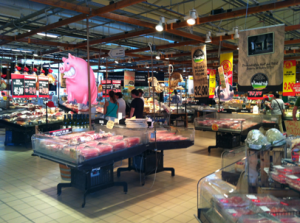 If you want to see quality experiences done really well, visit a supermarket in Italy and have a look at fresh foods. This is Iper’s fresh foods section – each area is carefully segmented into a shop-in-shop environment which focusses not on the price of the product but on the breadth of range and its quality. Sure there are plenty of deals too, but this an extra reason to shop, not the primary reason to be there. I mentioned in my recent blog about Carrefour that strategies like this drive loyal shoppers back into the store time and again.
If you want to see quality experiences done really well, visit a supermarket in Italy and have a look at fresh foods. This is Iper’s fresh foods section – each area is carefully segmented into a shop-in-shop environment which focusses not on the price of the product but on the breadth of range and its quality. Sure there are plenty of deals too, but this an extra reason to shop, not the primary reason to be there. I mentioned in my recent blog about Carrefour that strategies like this drive loyal shoppers back into the store time and again.
Make it easy to buy what you wanted
 There’s a lot of hype about omni-channel retail but it really does add major value. Over the past few years, UK retailer Marks & Spencer’s has expanded its network of smaller stores. These focus primarily on food – much of it very good. But this means that apparel, another stalwart of the “Marks and Sparks” range is often limited in its range and availability in these stores.
There’s a lot of hype about omni-channel retail but it really does add major value. Over the past few years, UK retailer Marks & Spencer’s has expanded its network of smaller stores. These focus primarily on food – much of it very good. But this means that apparel, another stalwart of the “Marks and Sparks” range is often limited in its range and availability in these stores.
I popped into this store to re-stock on socks and underwear only to find none were on sale. But have no fear – the order online booth shown here allowed me to buy what I wanted without the cost of a long trip the nearest large format stores. Not only does this help close sales that could otherwise be lost but it also opened me up to a number of trade-up options in the products I bought.
Make the offer match the need
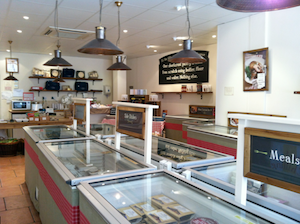 Specialist food retailing is going through resurgence in many markets and I particularly liked this store, again in the UK. Cook is a franchise operation with nearly 70 stores and the big idea is that ready-to-cook meals are rarely flexible enough to cater for either very large parties or very small ones. Cook offers a seasonally changing menu of frozen, heat in the oven meals that come in servings for one to six people.
Specialist food retailing is going through resurgence in many markets and I particularly liked this store, again in the UK. Cook is a franchise operation with nearly 70 stores and the big idea is that ready-to-cook meals are rarely flexible enough to cater for either very large parties or very small ones. Cook offers a seasonally changing menu of frozen, heat in the oven meals that come in servings for one to six people.
They even sell swanky heating dishes so you can brag to your friends that you cooked it yourself. This little retailer, with its neatly focused proposition, is well-positioned to compete with larger players who can’t match Cook’s range; in this case, price becomes far less relevant
Make it a lot more fun
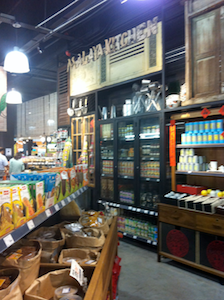 I blogged about BIG (Ben’s Independent Grocer) in Malaysia recently but I want to refer to them again, because the shopping environment theyve created is just so nice.
I blogged about BIG (Ben’s Independent Grocer) in Malaysia recently but I want to refer to them again, because the shopping environment theyve created is just so nice.
It’s the sort of place I want to go to buy groceries, because buying there is fun. If shoppers really do have to spend an hour of their lives shopping – I believe that they are entitled to do in a pleasant environment. Many shoppers agree which is why so much is written about customer experience.
This is, after all the ultimate non-price strategy.
The examples I have given clearly show why I believe this may indeed the beginning of the end of price as a retail strategy. I speak and blog often about the future of retail, online and offline so please contact me if you would like to learn more about changes in retail that might affect your brands and their shoppers.